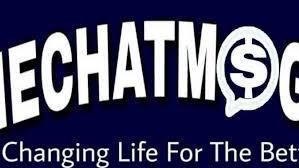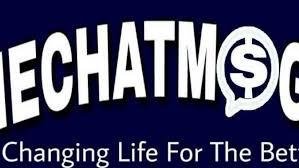In 2025, motion graphics have become an essential part of visual communication across industries—from entertainment and marketing to education and tech. As the demand for compelling animated content grows, animation studios are constantly seeking the most powerful and efficient tools to bring ideas to life. Whether creating short-form content for social media, cinematic sequences for film, or interactive visuals for digital platforms, choosing the right software can make or break a studio’s creative process. With both seasoned programs and exciting new entrants on the market, it’s an ideal time to explore which motion graphics software stands out this year.
1. Adobe After Effects: Still the Industry Standard
Adobe After Effects remains the go-to tool for most professional motion designers and animation studios. Known for its powerful compositing features and wide array of effects, After Effects continues to lead the industry in 2025. It’s particularly suited for 2D animations, kinetic typography, and complex layer-based motion graphics. Its compatibility with Photoshop, Illustrator, and Premiere Pro helps streamline project workflows, and its expansive library of third-party plugins means that almost any visual effect is within reach. Despite its complexity, the immense support community and vast learning resources make it accessible for growing studios as well.
2. Blender: Open-Source Excellence for 3D Motion Graphics
Blender has seen exponential growth in recent years and has become a top contender in motion graphics creation—especially for animation studios embracing 3D work. Originally built for modeling and rendering, Blender now offers advanced animation capabilities, especially with its Geometry Nodes system, which introduces procedural workflows perfect for abstract or generative motion. With features like real-time rendering through Eevee and advanced simulation tools, it delivers high-end output without a price tag. Many studios are now incorporating Blender as either a primary tool or a complement to more traditional motion design platforms.
3. Cinema 4D: Seamless 3D Motion Design
Cinema 4D continues to be a favorite among motion graphics professionals, thanks to its powerful MoGraph module and user-friendly interface. In 2025, it remains a staple in the toolkit of animation studios focused on 3D animation, visual effects, and product visualization. The software’s procedural capabilities make it ideal for creating animated patterns, dynamic title sequences, and abstract graphics. Its integration with Adobe After Effects also makes it a logical companion for hybrid 2D/3D projects. Studios appreciate its balance of depth and accessibility, especially when creating broadcast-quality motion content.
4. Apple Motion: Simple, Fast, and Affordable
For Mac users, Apple Motion presents a highly efficient option, particularly for smaller animation studios or content creators with fast turnaround needs. Designed to integrate seamlessly with Final Cut Pro, Motion offers a real-time preview environment, GPU-accelerated performance, and a wide array of templates and behaviors that simplify animation creation. It may lack the depth of more advanced tools, but its affordability and ease of use make it a compelling option for basic titles, transitions, and visual effects. It’s a solid choice for studios producing high volumes of lightweight, polished content.
5. TouchDesigner: Real-Time and Interactive Design
TouchDesigner is a unique offering in the world of motion graphics, specializing in real-time, interactive, and immersive visuals. As animation studios expand into experiential design, live events, and installations, TouchDesigner’s node-based environment proves incredibly flexible. Artists can use data from sensors, sound, or live video feeds to drive motion and visuals in real time. In 2025, it’s particularly popular in studios working at the intersection of technology and art, where performance and interactivity are just as important as aesthetics. It’s a different approach to animation, but one that’s gaining serious momentum.
6. Cavalry: Data-Driven and Procedural Animation
Cavalry is a rising star in the motion design scene, bringing a modern, procedural approach to 2D animation. Designed for speed and logic-based animation, Cavalry enables designers to use variables, expressions, and real-time data to control motion. Animation studios working on social media content, branded assets, or infographics often find Cavalry useful for its efficiency and automation features. While not as mainstream as After Effects, its growing user base and evolving feature set indicate that it could become a staple in many motion design pipelines in the near future.
7. Runway ML: AI-Powered Motion Creation
Artificial intelligence is reshaping the creative world, and Runway ML is at the forefront of AI-powered animation. This software allows users to generate and edit animations using machine learning models, drastically reducing the time it takes to produce polished content. While it doesn’t yet rival traditional tools in control or depth, animation studios are beginning to explore Runway ML for concept development, rapid prototyping, and visual experimentation. Its ability to simplify complex processes through automation makes it a compelling option, especially as AI becomes further integrated into creative workflows.
8. Lottie and Haiku Animator: Web and Mobile Integration
For studios focused on digital product design and development, Lottie and Haiku Animator provide ideal solutions. These tools allow designers to create lightweight, scalable animations that integrate seamlessly into websites and mobile applications. They support formats like JSON, making animations easy to embed without compromising performance. In 2025, as user interfaces become more dynamic and interactive, animation studios working with UI/UX teams are using these tools to enhance user experiences while maintaining smooth, responsive performance across platforms.
9. Matching Tools to Studio Needs
The best software for motion graphics isn’t universal—it depends on the needs, goals, and style of each animation studio. Some may prefer the deep compositing power of After Effects, while others might lean toward Blender’s 3D capabilities or TouchDesigner’s real-time flexibility. Studios focused on mobile development might prioritize Lottie, while those creating experiential content may thrive with TouchDesigner. In reality, many successful teams are combining multiple tools to meet the unique demands of each project. As technology evolves, so does the ability to craft dynamic, beautiful motion graphics with the right blend of creativity and software.


